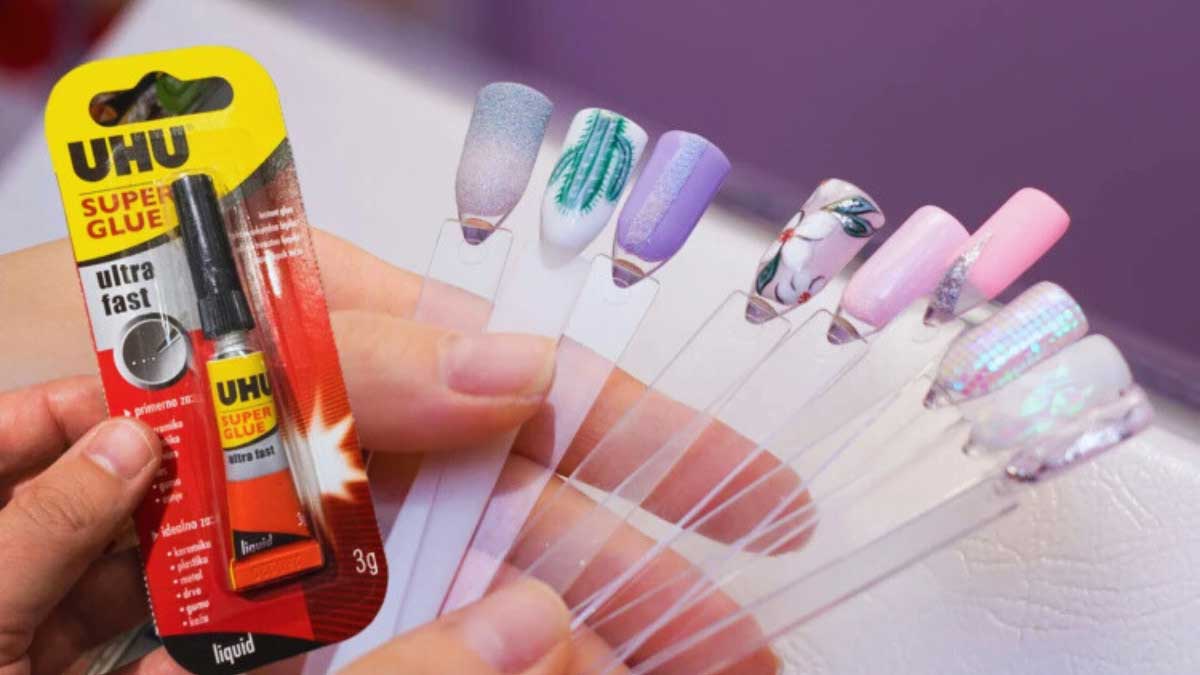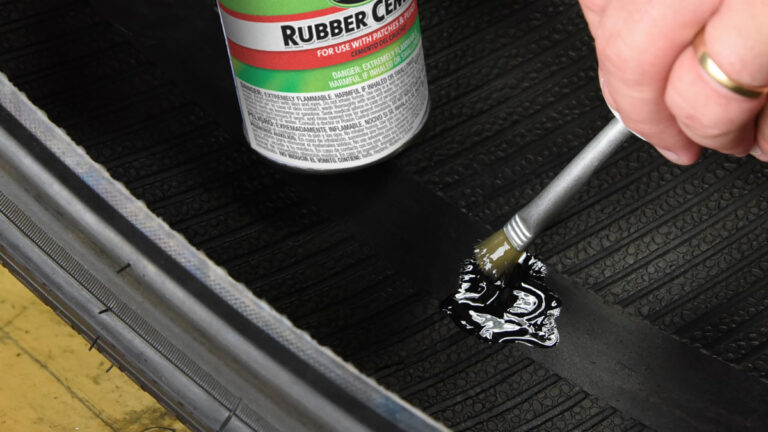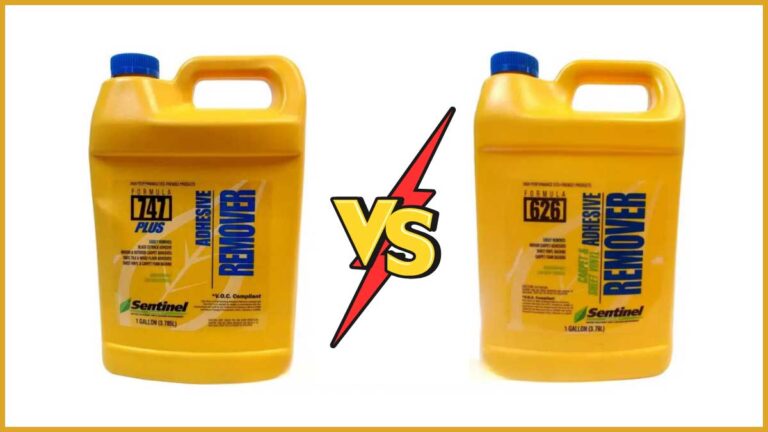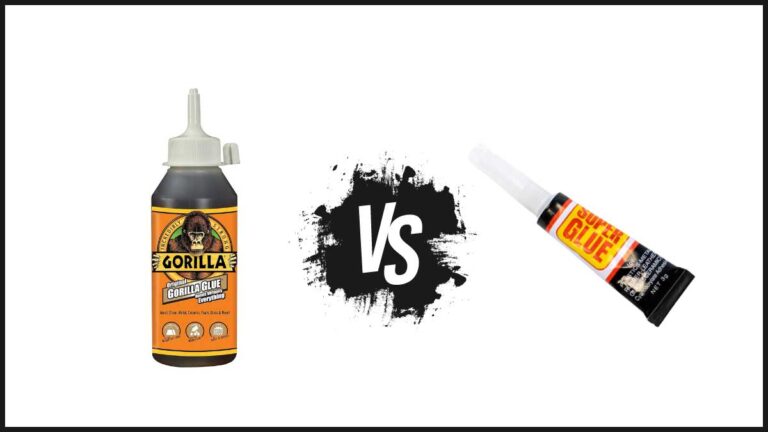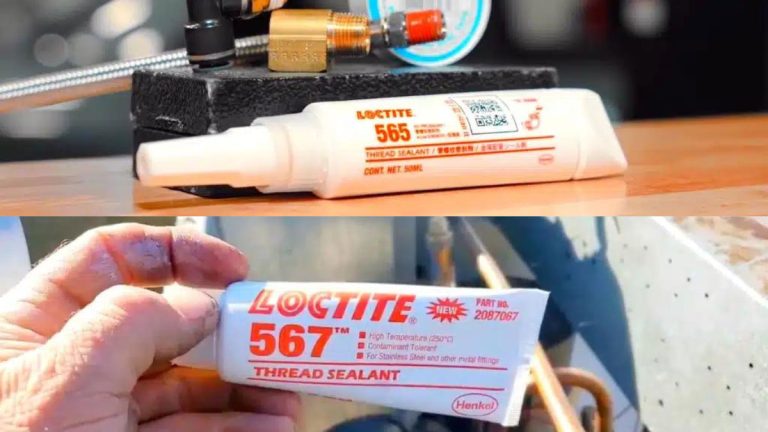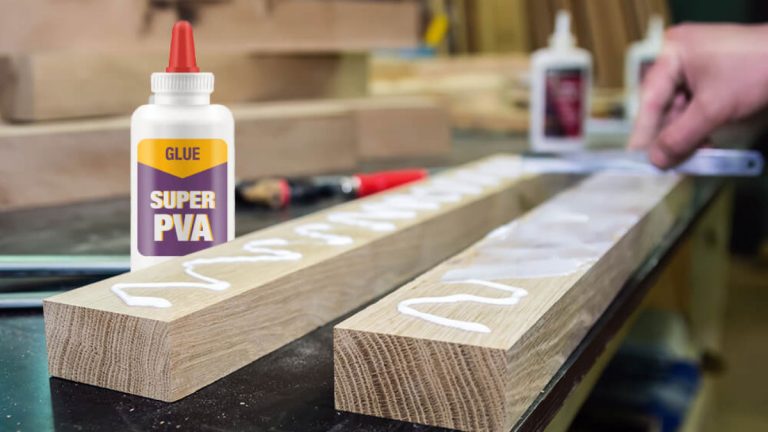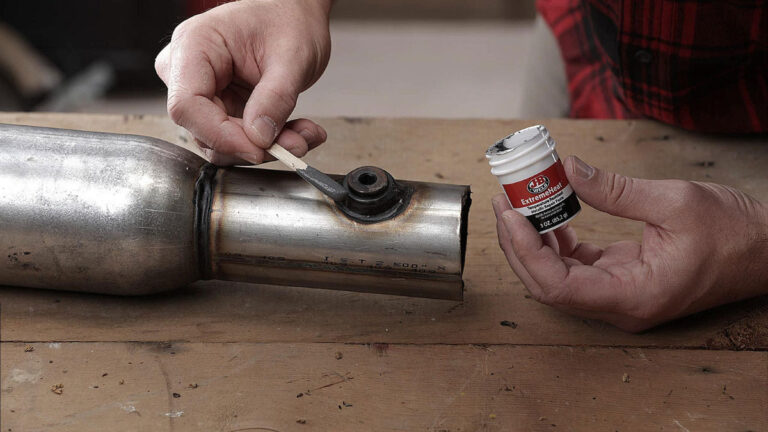Nail Glue vs Super Glue: Key Differences and Best Uses Explained
Ever found yourself in a pinch, wondering if you can use super glue instead of nail glue? You’re not alone. Many people face this dilemma, especially when they need a quick fix for a broken nail or a DIY project. Understanding the differences between nail glue and super glue can save you time, money, and potential mishaps.
Nail glue and super glue may seem similar, but they’re designed for different purposes. Nail glue is formulated specifically for adhering to nails, ensuring a strong yet flexible bond that can withstand daily wear and tear. Super glue, on the other hand, is a versatile adhesive known for its quick-drying, strong hold on various materials. Knowing when to use each type can make all the difference in achieving the best results.
Key Takeaways
- Nail Glue vs. Super Glue: Nail glue and super glue are distinct adhesives, each designed for specific uses. Nail glue is formulated for safe use on nails, while super glue is a general-purpose adhesive not recommended for nail applications.
- Composition Differences: Nail glue contains additives that make it gentle and suitable for nail beds, whereas super glue includes chemicals that enhance bonding but can irritate the skin and nails.
- Strength and Flexibility: Nail glue offers a flexible bond ideal for nails, minimizing damage and brittleness. Super glue creates a rigid bond that can make nails stiff and fragile.
- Safety Concerns: Using super glue on nails can cause skin irritation, burns, and damage due to its harsh chemicals. Nail glue is specifically designed for nail use, reducing these risks.
- Removal Methods: Nail glue can be safely removed with acetone-based nail polish remover. Super glue requires harsher removal techniques that can damage nails and skin.
- Best Practices: Follow proper preparation, application, and removal steps to ensure effective and safe use of nail glue, maintaining nail health and adhesion quality.
Is Nail Glue the Same as Super Glue?
No, nail glue and super glue aren’t the same, even though they share some properties. Each adhesive type serves a specific purpose and has distinct formulations and characteristics.
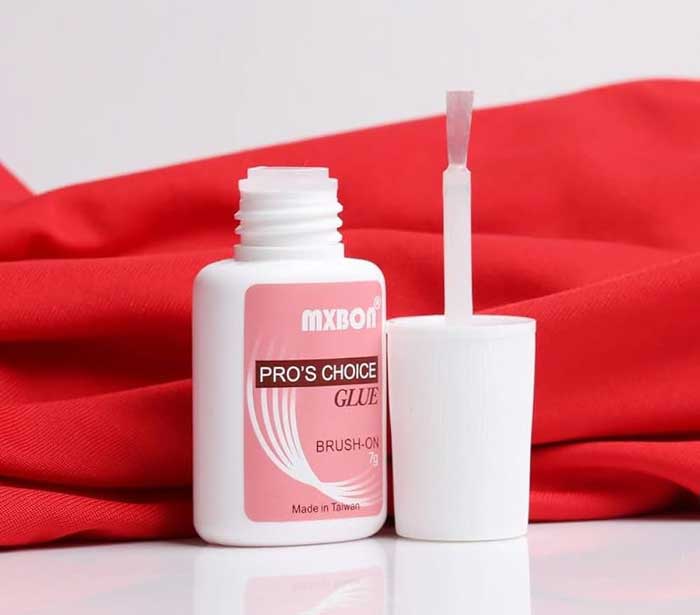
Composition Differences
Understanding the composition of both adhesives helps in choosing the right one for your needs.
- Nail Glue: Specifically formulated for nails, nail glue contains additives that make it suitable for use on the delicate nail bed. It’s designed to be gentle, reducing the risk of irritation or damage to your nails and surrounding skin.
- Super Glue: Primarily composed of ethyl cyanoacrylate, super glue contains additives that increase its versatility for bonding materials like metal, plastic, and ceramics. But, these additives can make it less suitable for use on nails.
Strength and Flexibility
The strength and flexibility of these adhesives vary significantly.
- Nail Glue: Designed to allow a degree of flexibility, nail glue accommodates the natural movement of your nails. This flexibility helps prevent damage and maintains the integrity of your nails.
- Super Glue: Known for its rigidity, super glue forms a hard bond. While this provides strong adhesion for various materials, it can cause your nails to become overly stiff and brittle, increasing the risk of damage.
Safety Concerns
Using the wrong adhesive on your nails can lead to complications.
- Nail Glue: Tailored for nail applications, nail glue is generally safer. It minimizes risks like allergic reactions, burns, and excessive nail bed hardening.
- Super Glue: Although it shares the main adhesive ingredient with nail glue, the additional chemicals in super glue can pose safety risks. Using it on your nails can lead to adverse effects such as skin irritation, burns, or severe nail damage.
| Adhesive Type | Primary Use | Key Ingredients | Flexibility | Safety for Nails |
|---|---|---|---|---|
| Nail Glue | Nail applications | Ethyl cyanoacrylate, additives | Flexible | High (specifically formulated) |
| Super Glue | Various materials | Ethyl cyanoacrylate, additives | Rigid | Low (due to additional chemicals) |
Choosing the right adhesive helps ensure the safety and health of your nails. Use nail glue for nail-related applications to avoid potential damage.
Key Differences Between Nail Glue and Super Glue
When comparing nail glue and super glue, it’s crucial to understand their distinct properties and appropriate uses. These differences impact their effectiveness, safety, and reliability for various applications.
Chemical Composition
- Nail Glue: Specifically formulated for cosmetic use, nail glue is typically ethyl cyanoacrylate-based but designed to be safer and more compatible with your skin and nails. Manufacturers often add inhibitors to reduce skin irritation and improve bonding with nail materials.
- Super Glue: While also ethyl cyanoacrylate-based, super glue contains harsher chemicals not intended for skin or nails. These additives enhance its versatility in bonding materials like metal and plastic but increase the risk of irritation and damage when used on your nails.
Bonding Capabilities and Strength
- Nail Glue: Provides a strong yet flexible bond, ideal for your nail applications. This formulation reduces nail damage and breakage. It maintains its integrity when exposed to water and activities like hand washing or swimming.
- Super Glue: Known for its powerful and rigid bond, super glue’s hardness can be too intense for your nail applications. This can result in excessive hardening of your nail coating, leading to brittleness and potential damage to your nail bed and surrounding tissues.
Intended Applications
- Nail Glue: Specifically designed for attaching artificial nails, fixing broken nails, and other cosmetic uses. This makes it the best choice for your nail-related needs, ensuring safety and effectiveness.
- Super Glue: Meant for general-purpose use, including fixing household items, adhering plastics, and bonding metals. Its versatile nature makes it unsuitable and unsafe for delicate tasks involving your nails and skin.
Removal and Safety Considerations
- Nail Glue: Easily removable with standard nail polish removers containing acetone. This ensures a safe and damage-free removal process for your nails. The formulation minimizes risks of burns, irritation, and allergic reactions.
- Super Glue: Requires specific solvents like acetone for removal, which can be harsh on your nails and skin. Improper removal may cause burns, irritation, and even more severe skin damage. Following safety guidelines is crucial to avoid these risks.
| Feature | Nail Glue | Super Glue |
|---|---|---|
| Chemical Composition | Ethyl cyanoacrylate, skin-safe | Ethyl cyanoacrylate, harsh chemicals |
| Bonding Strength | Strong, flexible | Strong, rigid |
| Water Resistance | High | Moderate |
| Intended Use | Cosmetic (nails) | General-purpose (household) |
| Removal Method | Acetone-based nail polish remover | Acetone (harsh) |
| Safety for Skin/Nails | High | Low |
Choosing the right adhesive ensures both effectiveness and safety. For nail applications, nail glue is the superior choice, designed with the specific needs of your nails in mind.
Potential Risks of Using Super Glue on Nails
Using super glue on nails carries several potential risks that can affect both nail health and skin sensitivity. This section explores these risks in detail, helping you understand why super glue might not be the best choice for nail-related applications.
Nail Health and Damage
- Degradation of Top Layer: Super glue contains etching agents that roughen nail surfaces for better adhesion. These agents can degrade the top layer of your nails, making them weaker and more prone to damage.
- Dehydration: The removal process for super glue often requires soaking nails in acetone for extended periods. This can dehydrate your nails, leading to brittleness and weakening of both the nails and cuticles.
Skin Sensitivity and Irritation
- Dermatitis Risk: Super glue is not manufactured for skin contact and can cause dermatitis or skin irritation when it touches your cuticles or nail bed.
- Chemical Exposure: As super glue is not produced in sterile environments, it often contains harmful chemicals not suited for prolonged skin contact. This increases the likelihood of adverse reactions and skin irritation.
- Extended Soaking: Removing super glue necessitates long periods of soaking in acetone, which is not only tedious but also harsh on your nails and skin.
- Residual Damage: The aggressive nature of the removal process can result in further damage, causing weakened nails and dehydrated cuticles even after the glue is removed.
Using super glue on nails can lead to various issues, making it less suitable for nail-related applications compared to specialized nail glue. For safer and more effective results, opting for nail glue specifically designed for this purpose is advisable.
Best Practices for Using Nail Glue
When using nail glue, following best practices ensures effective results and minimizes risks. Understanding both preparation and safe removal techniques is crucial for maintaining nail health and achieving a lasting bond.
Preparation and Application
Proper preparation and correct application of nail glue are essential steps for a secure and enduring bond.
Preparation Steps:
- Clean your nails: Remove any old polish, dirt, or oils using an acetone-free nail polish remover to prevent interference with the adhesive.
- Trim and file: Shape your nails to the desired length and smooth the edges to avoid snagging.
- Buff the nail surface: Lightly buff the surface of your nails with a nail buffer to create a smooth area for the glue to adhere to.
- Push back cuticles: Gently push back your cuticles using a cuticle pusher to ensure a clean application area.
Application Steps:
- Apply glue evenly: Place a small drop of nail glue on either the natural nail or the artificial nail tip.
- Press and hold: Align the artificial nail tip with your natural nail and press firmly for 5-10 seconds to ensure a strong bond.
- Clean any excess glue: Use a cotton swab dipped in acetone to remove any excess glue around the edges of the nail.
Safe Removal Tips
Following safe removal procedures helps prevent damage to your natural nails and surrounding skin.
- Soak in warm, soapy water: Soak your nails in warm, soapy water for 10-15 minutes to soften the adhesive.
- Use an acetone-based remover: Apply an acetone-based nail polish remover to help dissolve the glue. Soak a cotton ball with remover, place it on your nail, and wrap it with aluminum foil. Leave it for 10-15 minutes.
- Gently lift the glue: After soaking, use an orange stick or cuticle pusher to gently lift the artificial nail or remaining glue from your natural nail. Avoid forcing it off to prevent damage.
- Condition your nails: After removal, wash your hands thoroughly and apply a nourishing cuticle oil or hand cream to hydrate and restore moisture.
Adhering to these best practices ensures that you can achieve salon-quality results while keeping your nails healthy and strong.
Alternatives to Nail Glue and Super Glue
Choosing the right adhesive for nail applications requires understanding safer and more effective alternatives. Here, we’ll explore options that suit various needs without the adverse effects associated with super glue.
Nail Tabs
Nail tabs offer a convenient, mess-free solution for temporary nail adhesion. These double-sided adhesive tabs are ideal for short-term wear, such as special occasions or events.
Features:
- Easy Application: Tabs come pre-cut and are simple to attach.
- Gentle on Nails: Do not contain harsh chemicals, making them safe for your nails.
- Removable: Easily peel off without damaging the nail bed.
Application Steps:
- Clean your nails to remove oils and residues.
- Select a tab size that matches your nail.
- Peel off one side of the protective film and place the tab on your natural nail.
- Remove the top film and press the artificial nail onto the tab.
Usage Context:
- Best for short-term use scenarios like events or photoshoots.
- Not suitable for long-term wear due to less durable bonding.
Professional Nail Adhesives
Professional nail adhesives are specially formulated to provide strong, lasting bonds while ensuring safety for nail and skin contact.
Features:
- Enhanced Formulation: Contains additives that protect nails and reduce the risk of allergic reactions.
- Superior Bond Strength: Designed to hold acrylic or gel nails securely.
- Versatile: Suitable for a variety of nail enhancements including tips and full-coverage nails.
Application Steps:
- Prepare your nails by cleaning, trimming, filing, and buffing.
- Apply the adhesive evenly to cover the desired nail surface.
- Align and press the artificial nail or tip onto your natural nail.
- Hold for a few seconds to ensure a secure bond.
Usage Context:
- Ideal for long-term wear, providing reliable and durable adhesion.
- Commonly used by nail professionals for salon-quality results.
| Feature | Nail Tabs | Professional Nail Adhesives |
|---|---|---|
| Application Ease | High | Moderate |
| Bond Strength | Low to Moderate | High |
| Duration of Wear | Short-term (1-2 days) | Long-term (up to several weeks) |
| Safe for Natural Nails | Yes | Yes |
| Best Use Context | Special events, temporary wear | Long-term applications, professional use |
Consider these alternatives when selecting an adhesive for nail applications. Nail tabs provide a flexible, temporary option, while professional nail adhesives offer durable, long-lasting results.
Conclusion
Choosing between nail glue and super glue eventually comes down to understanding their specific formulations and intended uses. Nail glue is crafted for the delicate nature of nails, ensuring a flexible and safe bond, while super glue’s versatility makes it suitable for various materials but less ideal for nail applications. Prioritizing nail health means opting for nail glue and following best practices for preparation and removal. Exploring alternatives like nail tabs and professional adhesives can also provide safer, effective options. Your nails deserve the best care, so make informed choices for optimal results.
Frequently Asked Questions
Can I use super glue as nail glue?
While super glue has strong adhesive properties, it is not suitable for nails. Super glue contains harsh chemicals that can cause irritation, brittleness, and damage to nails and skin.
What is the primary difference between nail glue and super glue?
Nail glue is specifically formulated for cosmetic use on nails, providing a flexible and safe bond. Super glue, on the other hand, is a versatile adhesive with harsher chemicals, designed for various materials like metal and plastic.
Is super glue safe to use on nails?
No, super glue is not safe for nails. It can cause skin irritation, burns, and degradation of the nail’s top layer due to its harsh chemical composition.
What are the risks of using super glue on nails?
Using super glue on nails can lead to skin irritation, chemical burns, nail brittleness, and weakened nails due to the aggressive removal process.
Are there safer alternatives to nail and super glue for nails?
Yes, alternatives such as nail adhesive tabs and professional nail adhesives are safer options. Nail tabs provide temporary wear, while professional nail adhesives offer a strong, lasting bond.
How do I safely prepare my nails for nail glue application?
Preparation steps include cleaning the nails, trimming and filing, buffing the nail surface, and pushing back cuticles to ensure proper adhesion and nail health.
What are the best practices for removing nail glue?
For safe removal, soak your nails in warm, soapy water or an acetone-based remover. Gently lift the glue and condition your nails afterward to maintain their health.

